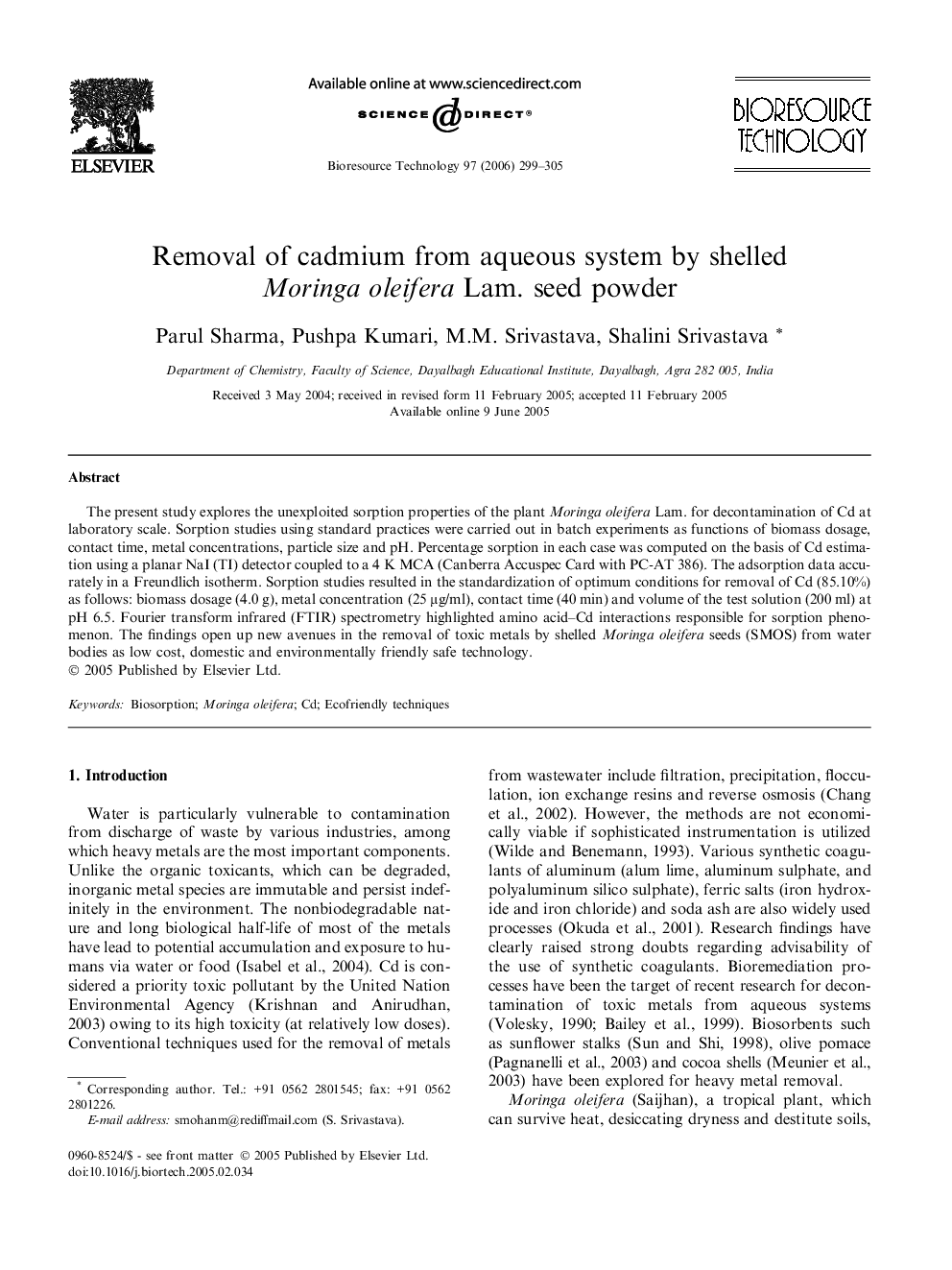| Article ID | Journal | Published Year | Pages | File Type |
|---|---|---|---|---|
| 686179 | Bioresource Technology | 2006 | 7 Pages |
Abstract
The present study explores the unexploited sorption properties of the plant Moringa oleifera Lam. for decontamination of Cd at laboratory scale. Sorption studies using standard practices were carried out in batch experiments as functions of biomass dosage, contact time, metal concentrations, particle size and pH. Percentage sorption in each case was computed on the basis of Cd estimation using a planar NaI (TI) detector coupled to a 4 K MCA (Canberra Accuspec Card with PC-AT 386). The adsorption data accurately in a Freundlich isotherm. Sorption studies resulted in the standardization of optimum conditions for removal of Cd (85.10%) as follows: biomass dosage (4.0 g), metal concentration (25 μg/ml), contact time (40 min) and volume of the test solution (200 ml) at pH 6.5. Fourier transform infrared (FTIR) spectrometry highlighted amino acid-Cd interactions responsible for sorption phenomenon. The findings open up new avenues in the removal of toxic metals by shelled Moringa oleifera seeds (SMOS) from water bodies as low cost, domestic and environmentally friendly safe technology.
Keywords
Related Topics
Physical Sciences and Engineering
Chemical Engineering
Process Chemistry and Technology
Authors
Parul Sharma, Pushpa Kumari, M.M. Srivastava, Shalini Srivastava,
